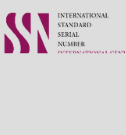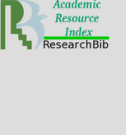Hepatitis C and Typhoid Co-epidemics in COVID-19 Era in Lahore, Pakistan: A Cross-sectional Research to Rule out Probable Relation
Keywords:
Hepatitis C, Typhoid Fever; , COVID-19, Co-infections, PakistanAbstract
Background: Infectious diseases including typhoid, tuberculosis, malaria, dengue, and hepatitis are widespread in Pakistan because of population growth, poverty and a lack of healthcare infrastructure. Their co-infection with COVID-19 can further worsen the disease.
Objectives: To determine the prevalence of typhoid and HCV co-infection with COVID-19 in patients from Lahore Pakistan.
Methods: The cross-sectional survey collected demographic data and blood specimens from 199 COVID-19 hospitalized patients at a private hospital in Lahore. D-dimer, ferritin, and CRP levels were determined qualitatively, as well as typhoid and HCV quick diagnostic tests. The Chi-square and Pearson correlation tests were used for statistical analysis.
Results: Gender distribution revealed that 55% of COVID-19 patients were male and 45% were female. CRP and D-dimer levels were increased in 132 (66.33%) patients, whereas serum ferritin levels were increased in 92 (46.23%) individuals. Typhoid was detected in 71 out of 199 patients, with 13 (18.3 percent) patients testing positive for IgM and 58 (81.7 %) patients testing positive for both IgM and IgG. D-dimer, CRP, and ferritin levels were elevated in COVID-19 patients with typhoid co-infection. Additionally, they were positively linked with age in COVID-19 patients with concurrent typhoid illness, with statistical significance (p<0.05). Similarly, 45 (22.6 %) of patients tested positive for HCV, although the results were not statistically significant (p>0.05).
Conclusion: Typhoid was frequent among COVID-19 patients. Patients’ age, D-dimer, ferritin, and CRP levels increased concurrently with disease severity and were strongly linked with one another, despite low HCV seropositivity in COVID-19 patients.
Downloads
Downloads
Published
Issue
Section
Categories
License
Copyright (c) 2025 Open Access Journal

This work is licensed under a Creative Commons Attribution-NonCommercial 4.0 International License.



